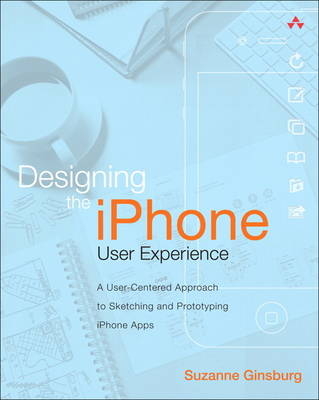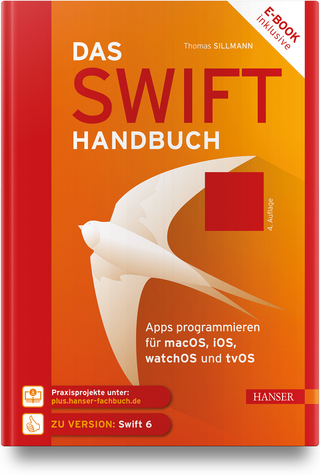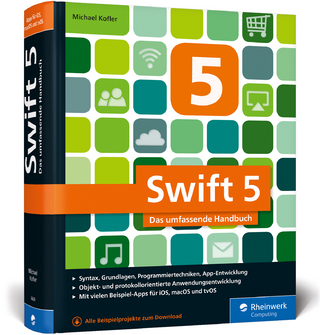
Designing the iPhone User Experience
Addison-Wesley Educational Publishers Inc (Verlag)
978-0-321-69943-5 (ISBN)
- Titel ist leider vergriffen;
keine Neuauflage - Artikel merken
—Pabini Gabriel-Petit, UX Strategy & Design Consultant and Publisher and Editor in Chief of UXmatters
“It’s about time! Suzanne Ginsburg takes the best of User-Centered Design (UCD) principles and tweaks them with a dash of mobile and a lot of hints about what it means to implement the Apple Human Interface Guidelines for iPhone. Your idea for an iPhone app has much better chances of being accepted by iPhone owners (and by the iTunes watchdogs guarding entry to the App Store) if you follow even half of the suggestions in this book.”
—Nancy Frishberg, Ph.D., User Experience Strategist and past Chair of BayCHI
Given the fiercely competitive state of the iPhone app landscape, it has become increasingly challenging for app designers and developers to differentiate their apps. The days are long gone when it was possible to crank out an app over the weekend and refine it after receiving a few not so flattering user reviews. Users now have choices -- lots of them. If your app is difficult to use or doesn’t meet their needs, finding another one is just a tap away.
To illustrate, consider the ever-growing field of Twitter clients. There are hundreds of variations in the App Store but only a handful stand out from the pack (such as Tweetie or Twitterific). For most apps, it boils down to one thing: the user experience. The same is true for countless other categories within the App Store; well-designed apps are more likely to attract and retain users. Of course there are other critical aspects of iPhone app development: the coding, the marketing, the customer support. All of the elements must come together.
Designing the iPhone User Experience will help you tackle the user experience part of the iPhone challenge. Three key themes will be reinforced throughout the book: Know thy user, the Design Lifecycle, and Attention to Detail:
Know Thy User
Millions of people depend on iPhone apps to get them to work, find their next meal, and stay in touch with family and friends. Professionals of all kinds also rely on iPhone apps: doctors look up drug interactions; photographers fine-tune lighting; cyclists find the best routes. To truly understand how your apps can fit into their lives, designers and developers must learn how users do things today, what’s important to them, and what needs have not been met. Part II, Introduction to User Research, will introduce a variety of user research methods.
The Design Lifecycle
Award-winning designs rarely happen overnight; they usually only occur after many rigorous design cycles. To illustrate this point, consider USA TODAY's iPhone application, which went through at least seven iterations for the article view in their app. These kinds of iterations should happen before you launch your app, since it will save valuable time and money, not to mention the headaches a bad design could create for your user. More importantly, you may only have one chance to impress your users -- you do not want to sell them half-baked ideas. Part III, Developing your App Concept, will explain how to iteratively design and test your app concepts.
Attention to Detail
Most professionals know that attention to detail is important, but hundreds of apps fail to incorporate even the most basic design principles. This lack of attention is not merely an aesthetic issue (which is important) it also affects the way apps function. For example, a news article without proper alignment will be difficult to read, and a poorly rendered icon will be challenging to interpret. Apps with a razor sharp attention to detail will stand out because their apps will look good and perform well. Part IV, Refining your App Concept, will show you how to make to your app shine, from visual design and branding to accessibility and localization.
Mastering these three areas will help set your app apart from the crowd. You may not have an award-winning app over night. But knowing your users, iterative design, and attention to detail are important first steps.
Suzanne Ginsburg is a user experience consultant based in San Francisco, California. She helps companies conceptualize and design software. She works with many different kinds of organizations, from established technology companies to small iPhone startups. One of her favorite aspects of user experience design is exploratory user research which helps uncovers users’ unmet needs and inspires innovation. She has conducted exploratory research for online communities, home networking software, and several iPhone apps. Sketching and prototyping also play a big role in her design process. Suzanne is constantly exploring new approaches and evolving her prototyping tool kit. Suzanne is most passionate about products that connect people, such as messaging and social media. These projects often involve cross-platform design which looks at the user experience across the web, desktop and iPhone. Suzanne is also interested in the field of augmented environments, particularly software that helps users learn about the people, objects, and places around them. Suzanne is an experienced speaker and writer. She regularly presents at meetups, UX book clubs, and conferences. She also maintains a UX blog, iPhone UX Reviews, where she reviews iPhone apps and provides advice on iPhone app design. Suzanne has a Masters Degree in User Interface Design from UC Berkeley’s iSchool and an undergraduate degree in Business Management from Cornell University. You can learn more about Suzanne at Ginsburg Design.
Preface xv
We’d Like to Hear from You xxvii
Acknowledgments xxix
About the Author xxxi
Part One: iPhone Application and Device Overview 1
Chapter 1: iPhone Application Overview 3
Utility Apps 4
Productivity Apps 7
Immersive Applications 12
Summary 17
Chapter 2: iPhone Device Overview 19
Reviewing the iPhone and iPod Touch’s Features 20
Multi-Touch Display 21
Light, Proximity, and Motion Sensors 27
Location and Compass Information 29
Bluetooth 30
Still and Video Cameras 31
Microphone and Speaker 33
Summary 35
Part Two: Defining Your iPhone App 37
Chapter 3: Introduction to User Research 39
Common User Research Questions 40
Shadowing and User Interviews 43
Documenting User Interviews 47
Diary Studies 49
Choosing a Research Method 53
Planning Your Research 54
Recruiting 60
Facilitating Interviews 63
Related Research Activities 67
Summary 67
Chapter 4: Analyzing User Research 69
Share the Wealth 70
Analyze Notes 71
Document Implications and Ideas 74
Report Findings 75
Create Design Tools 79
Revise the Product Definition Statement 86
Summary 86
Case Study 1: Windspire 88
Case Study 2: Aardvark Mobile 90
Chapter 5: Evaluating the Competition 93
Benefits 94
Apps to Include 95
Methods 95
Choosing a Method 105
Impact on the Product Definition Statement 106
Summary 107
Part Three: Developing Your App Concept .109
Chapter 6: Exploring App Concepts 111
Creating a Design-Friendly Environment 112
Effective Brainstorming 113
Sketching Your Concepts 117
Common Questions 128
Summary 129
Case Study 3: Foodspotting 130
Case Study 4: Not For Tourists 132
Case Study 5: MUSE 134
Chapter 7: Prototyping App Concepts 137
Why Prototype? 138
Common Questions 139
Prototyping Approaches 142
Summary 157
Case Study 6: Prototyping at Dan4, Inc 158
Case Study 7: What’s Shakin’ 160
Chapter 8: Usability-Testing App Concepts 163
What Is Usability Testing? 164
Why Usability Testing? 164
Role of Context 166
Usability-Testing Methods 167
Usability-Testing Timeline 169
Planning Usability Tests 169
Recruiting Participants 173
Drafting the Discussion Guide 174
Pilot Session 177
Facilitating Usability Tests 178
Analyzing Usability Tests 179
Presenting Usability Findings 180
Guerrilla Usability Testing 181
Beta Testing 183
Choosing an Approach 184
Summary 184
Case Study 8: REALTOR.com 186
Part Four: Refining Your iPhone App 189
Chapter 9: User Interface Design 191
User Interface Best Practices 192
User Interface Q&A 207
Back-End UI Checklist 215
Summary 217
Case Study 9: Sonos 218
Case Study 10: FlightTrack 220
Chapter 10: Visual Design 223
The Importance of Visual Design 224
When Should Visual Design Begin? 224
Visual Structure 225
Color 230
Type 234
Icons and Other Imagery 237
Summary 245
Case Study 11: USA TODAY 246
Case Study 12: Voices 248
Case Study 13: Convertbot 250
Chapter 11: Branding and Advertising 253
What Is Branding? 254
Brand Expressions 257
Mobile Advertising Formats 261
Summary 263
Chapter 12: Accessibility and Localization 265
Accessibility 266
Internationalization and Localization 270
Summary 273
Looking to the Future 275
Handheld Forms Will Evolve 276
Mobile Payments Will Become Ubiquitous 277
Health Care Monitoring and Delivery Will Improve 277
Environmental Monitoring Will Lead to Scientific Discoveries 278
Privacy Issues Will Come to a Head 278
Conclusion 279
Index 281
| Erscheint lt. Verlag | 19.8.2010 |
|---|---|
| Verlagsort | New Jersey |
| Sprache | englisch |
| Maße | 204 x 251 mm |
| Gewicht | 784 g |
| Themenwelt | Informatik ► Programmiersprachen / -werkzeuge ► Mac / Cocoa Programmierung |
| Informatik ► Software Entwicklung ► Mobile- / App-Entwicklung | |
| Informatik ► Software Entwicklung ► User Interfaces (HCI) | |
| Informatik ► Weitere Themen ► Smartphones / Tablets | |
| Technik ► Nachrichtentechnik | |
| ISBN-10 | 0-321-69943-2 / 0321699432 |
| ISBN-13 | 978-0-321-69943-5 / 9780321699435 |
| Zustand | Neuware |
| Informationen gemäß Produktsicherheitsverordnung (GPSR) | |
| Haben Sie eine Frage zum Produkt? |
aus dem Bereich

